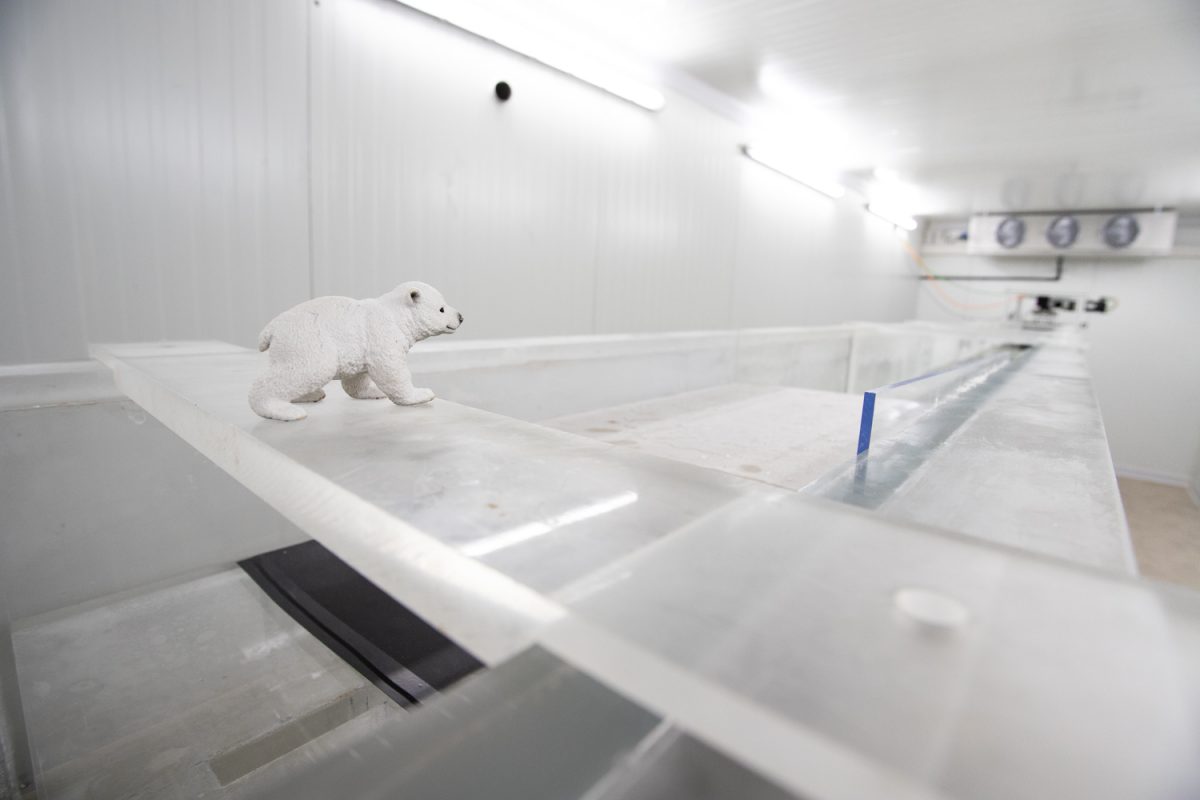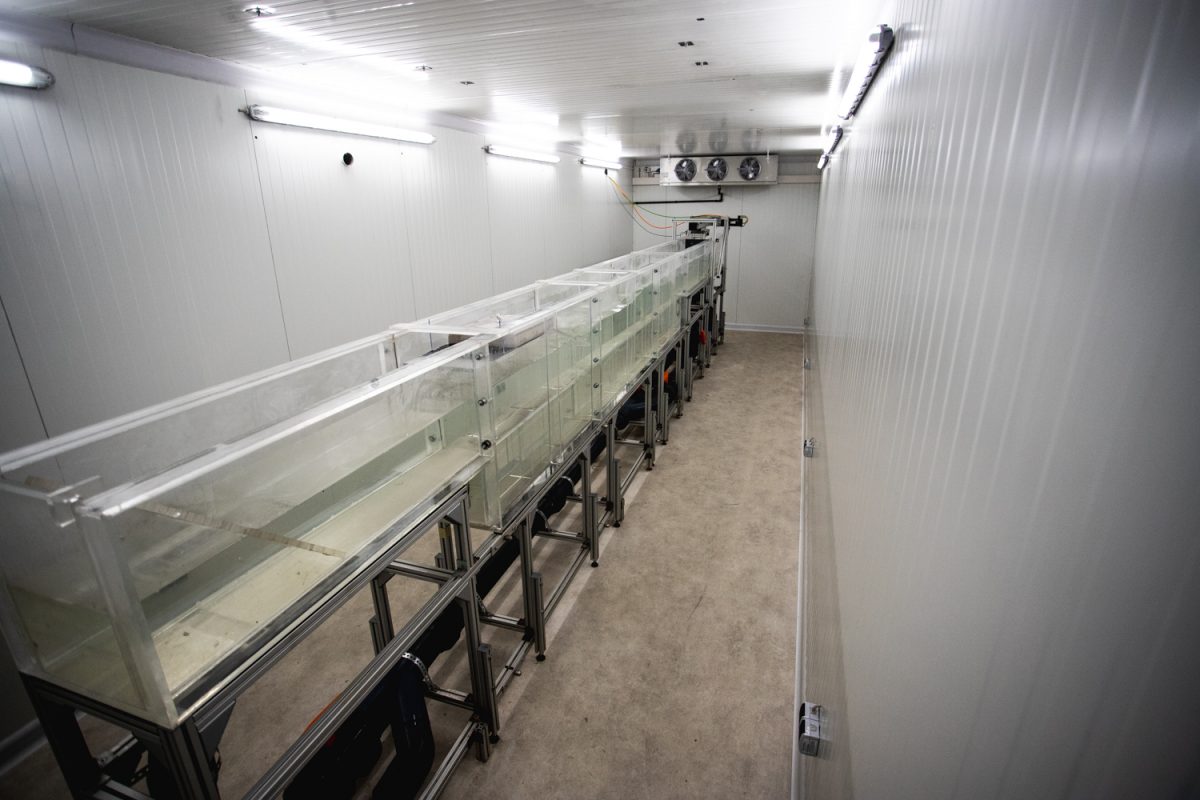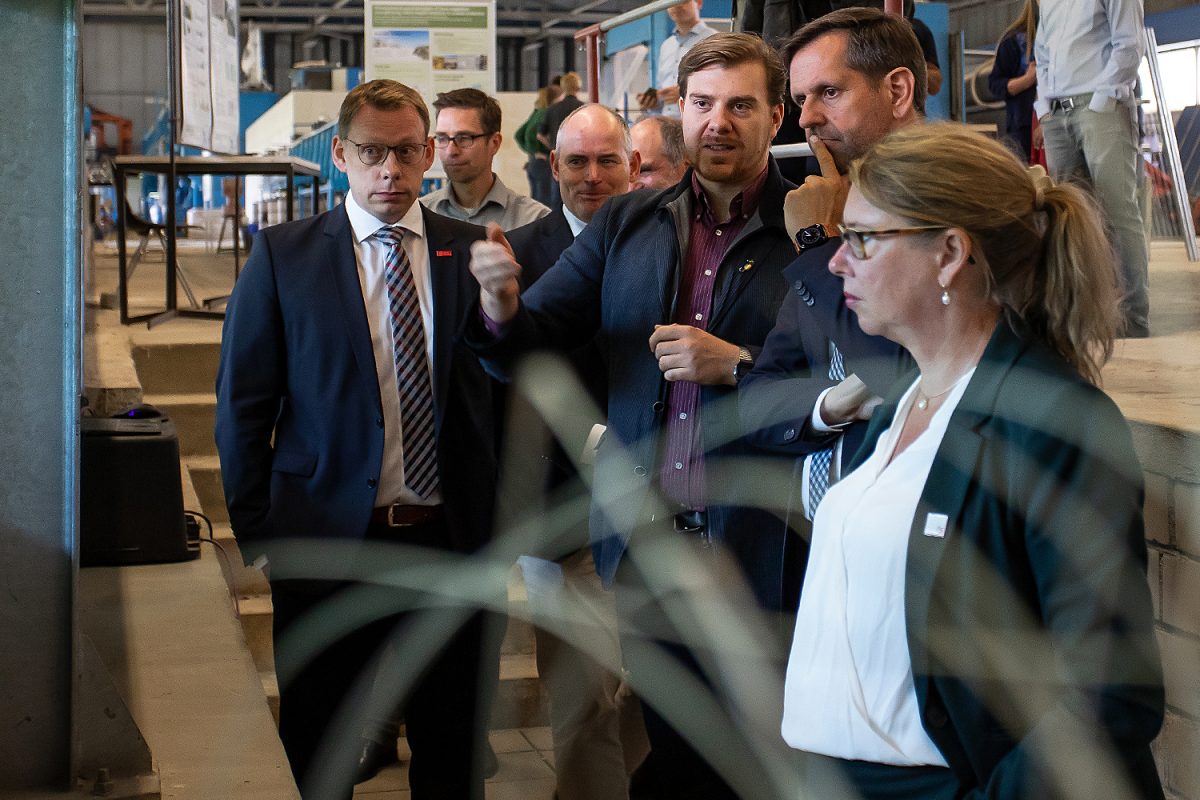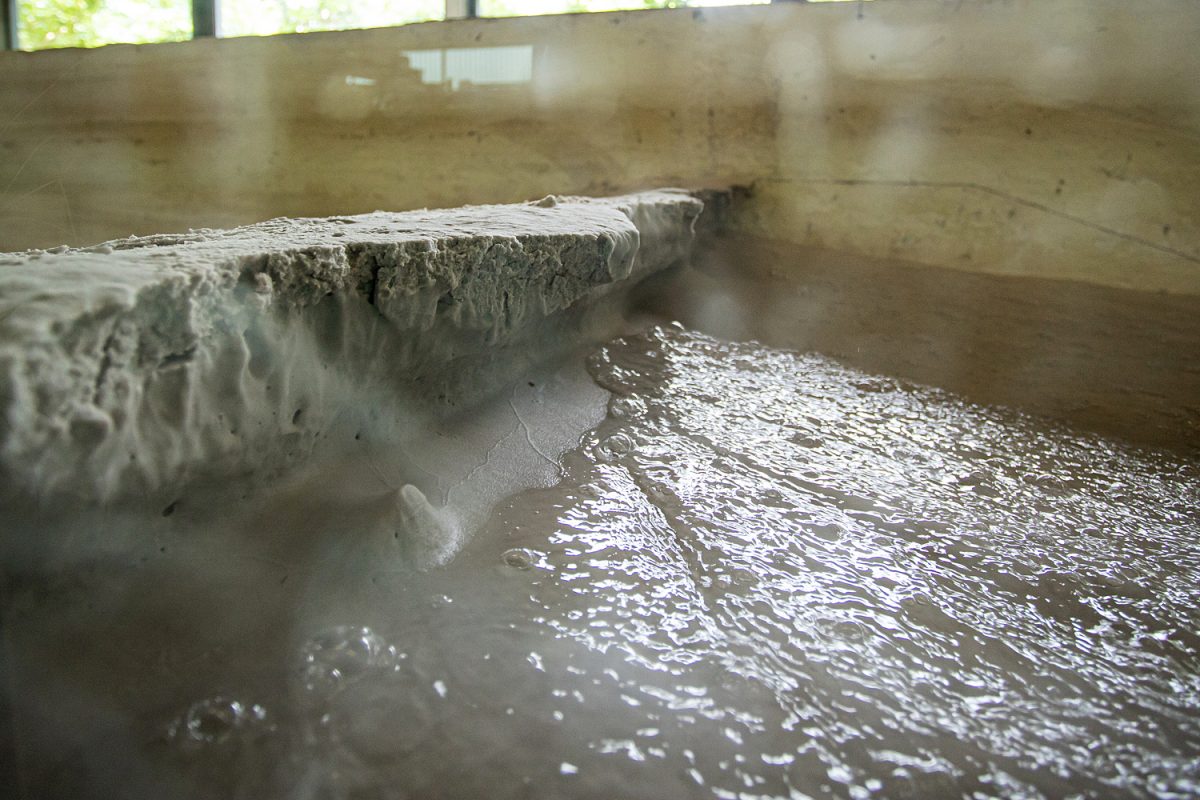The perfect climate for research Environment Minister Olaf Lies visited new experimental facility at the Leichtweiß-Institute for Hydraulic Engineering and Water Resources
What happens when the sea water on the Arctic coast becomes warmer and warmer? How much permafrost is gradually eroded as a result? This is what the Leichtweiß-Institute for Hydraulic Engineering and Water Resources (LWI) at Technische Universität Braunschweig is investigating in cooperation with the Alfred Wegener Institute (Helmholtz Centre for Polar and Marine Research) in a special climate chamber. Lower Saxony’s Environment Minister Olaf Lies visited the LWI during his summer trip 2022 and was able to take a look at Europe’s first experimental facility for studies on permafrost coasts.
The climate chamber in the LWI’s experimental hall is hidden in a refrigerated cell measuring ten by three metres. The scientists can vary the air and water temperature between four and 20 degrees Celsius using cooling units. During the visit of Environment Minister Olaf Lies and Braunschweig Member of the Landtag Annette Schütze, the temperature here was only five degrees Celsius, similar to that in a refrigerator.
In the wave channel of the climate chamber, an eight-metre-long plastic channel with a wave machine and flow system, the LWI team conducted an experiment to show how permafrost soils on coasts erode under wave loads, i.e. are washed out. For this purpose, a frozen soil body lies in the saltwater wave current channel, which the waves erode over time. The scientists are currently conducting the experiments on the erosion of permafrost soils in a joint project with the Alfred Wegener Institute Helmholtz Centre for Polar and Marine Research.
Thawing process fuels global warming
These studies are important because the ground on the Arctic coasts, which is actually permanently frozen, is increasingly thawing due to global warming. Erosion has now reached enormous proportions. This not only has an impact on the Arctic. “Carbon dioxide, methane and heavy metals, such as mercury, are stored in the soils,” explains Professor Nils Goseberg, Managing Director of the LWI. “During the thawing process and the erosion of the permafrost coasts, these substances enter the environment: the gases go into the atmosphere, further fuelling global warming. The heavy metals can get into the marine food chain and thus into the animal world and eventually also into the fish on our plates.”
Water research from the mountains to the sea
In addition to the melting of the permafrost coasts, researchers at the Leichtweiß-Institute for Hydraulic Engineering and Water Resources are dealing with other current challenges such as the rise in sea level, the erosion of dunes on the North Sea and their protection by vegetation, the pollution of water bodies and the consequences of storm surges as well as inland flooding caused by heavy rainfall events for coastal regions. Here, for example, Professor Hans Matthias Schöniger’s screening and pumping station monitoring pilot project (SiSchöMo) provides important hydrological and water management measurement data, which is needed, among other things, for further research into the effects of such extreme events. Environment Minister Lies signed the agreement with TU Braunschweig for the project last year.
“In view of ever drier summers with an increased demand for water, for example by agriculture, and wetter winters with more floods and storm surges, we have to act. Researchers at the Leichtweiß-Institute of Hydraulic Engineering and Water Resources are providing important data in their projects, data that is not yet available in this form and scope. This is important, because we will have to deal with extreme weather conditions more and more frequently in the future. In order to be able to plan ahead, we need a solid and improved database. This involves both the management and conversion of the precious commodity of water, the correct handling of expanding salt water zones as well as when water becomes a danger to people, animals and property, for example, through storm surges and inland flooding,” said Minister Olaf Lies.
Environment Minister Lies was not only able to find out about water research in the experimental hall. The Digital Building Fabrication Laboratory (DBFL) is also located here: a giant 3D concrete printer and building fabrication centre used to develop resource-efficient load-bearing structures in the building industry. However, not only high walls are printed here, but also shell tiles, which the LWI uses in the wave channel to investigate the influence of the Pacific oyster, for example.
Climate chamber
The climate chamber is a unique experimental facility developed by the scientists of the Department of Hydromechanics, Coastal and Ocean Engineering. The experimental facility with a saltwater wave-current channel allows experiments to be carried out under controlled conditions on waves, currents, temperature and varying salinity with sediments. The climate chamber was completed in May 2022. The material costs amount to 70,000 euros, which were financed by TU Braunschweig.
Leichtweiß-Institute for Hydraulic Engineering and Water Resources (LWI)
The Leichtweiß-Institute for Hydraulic Engineering and Water Resources at TU Braunschweig was named after its founder Dr.-Ing. e.h. Dr.-Ing. Ludwig Leichtweiß (1925-1950). It covers the field of sustainable water research – from the mountains to the sea – in research and teaching. The LWI includes the departments of Waste and Resource Management, Hydrology and River Basin Management, Hydromechanics, Coastal and Ocean Engineering, as well as Hydraulic Engineering and River Morphology.








